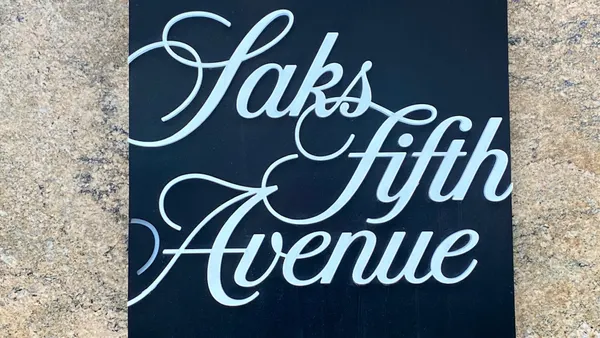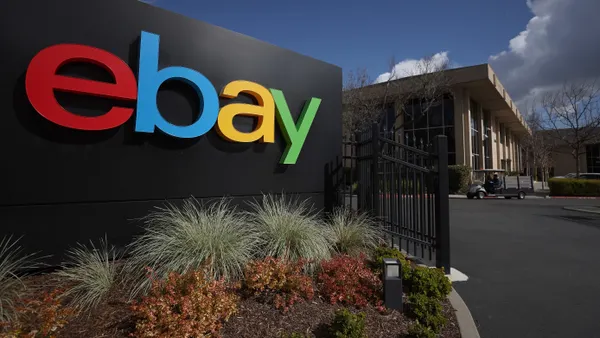Dive Brief:
- Shopping decisions that will be powered by augmented reality (AR), as well as virtual reality (VR), are among the top retail technology trends of the future, as reported in a press release by Infiniti Research. For example, with AR, shoppers interact with a mirror or screen to help them visualize how a piece of furniture would look in a room in their homes. AR also enables shoppers to see how garments look on them without having to try them on.
- To make store experiences more personalized for customers, retailers will increasingly use beacons, Internet of Things (IoT) devices and mobile apps. Infiniti's report said this retail trend is a "sure shot" for obtaining more customer loyalty and satisfaction as it helps shoppers find products that most closely match their tastes and needs.
- Restocking robots are also in retail's future, Infiniti said. Large retail stores represent a special challenge to continually monitor, and Infiniti expects these problems to be solved by robots roaming the long aisles looking for misplaced items, inaccurate price tags and empty shelves, and then sending data-driven reports back to the main computer system and employees.
Dive Insight:
Future retail technology trends will focus on customers' ease of shopping while transforming the shopping experience, a new report from Infiniti Research said, which identified seven such changes. The technology will also help to bolster retailer's brick-and-mortar efforts with the growth of online channels. The data generated from the new technologies will enable retailers to grow and improve their businesses as well.
Many large retailers have been focused on technology, with Walmart's tech incubator Store No. 8 focusing on VR, among other things, and Target unveiling an AR feature last year that allowed customers to see home products in their own living spaces. Indeed, market research from International Data Corp. said AR and VR products and services would be a $27 billion business this year.
There's also already evidence of robotics taking hold in retail. Walmart is expanding its use of in-store shelf-scanning inventory management robots, and recently announced a pilot of storage and retrieval robotics — Called Alphabot — to increase the speed of online grocery order pickup. The chain is building a 20,000 square foot extension onto its Salem, New Hampshire supercenter to accommodate the Alphabot program.
Amazon's fulfillment centers have long been known for their innovative use of robotics, such as in new warehouse facilities in Spokane, Washington, and Las Vegas. Even small stores, like Bell's Food Store in Athens, Georgia, is testing a shelf-scanning robot for store shelf analytics and insight.
Besides AR and VR, personalized shopping experiences and robotic inventory control, Infiniti also singled out the elimination of checkout lines, one-day delivery, more small-format stores, and catering to millennial customers as key future retail trends.
In future checkout systems, in-store cameras could work in tandem with artificial intelligence (AI) to scan physical shopping carts and charge customers' accounts directly, leaving lines in the past. Waiting for delivery is also less tolerated among consumers, with the expectation of two-day delivery already giving way to one-day delivery and in the coming decade, even same-day delivery, especially around the holiday gift-giving season.
"The consumer retail trends are already fast-changing and are prompting several retailers to quickly tap the changing needs and act accordingly," the Infiniti Research report said. "Furthermore, the retail sector is going through a fundamental change as players in this sector are identifying new ways to use data and intelligence."












